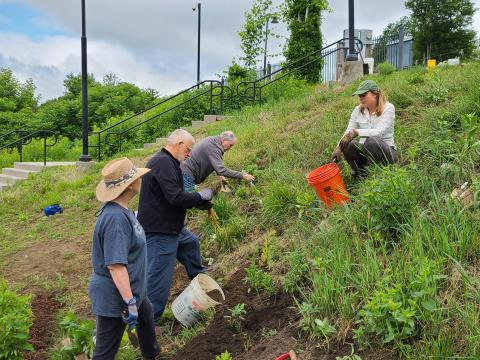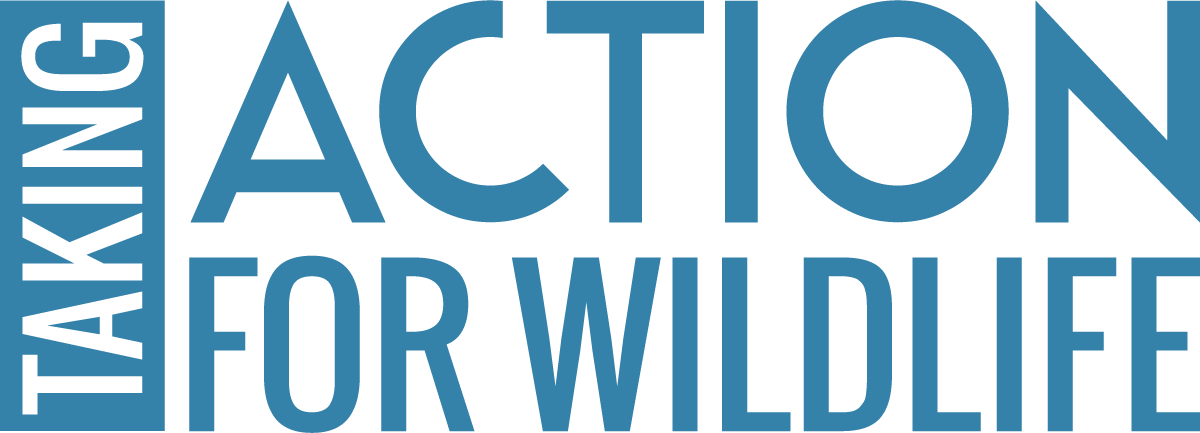A Bright Idea Leads to Learning
“When I became more interested in protecting wildlife, joining the conservation commission was the natural place to start,” said Jack Hurley, a long-time member of the conservation commission. The Claremont Conservation Commission had lots of ideas about protecting wildlife in their community but when it came down to action, they knew they had to enlist the support of the public to help conserve wildlife and habitat in their city. What they did not know…was how to make this happen.
The commission had many discussions focused on climate change and how it will be a major stressor on plant and animal communities in the future. “Addressing climate change is a no-brainer,” said Jim Contois, another commission member. Commission members were all aware of climate change but they felt the general public did not understand the impacts of extreme weather on local habitat and wildlife species. The commission recognized that they needed to do something to help Claremont residents learn more about climate issues and be inspired to take action to improve their local ecosystem’s resilience.
To address their concerns about climate change, they enrolled in the Taking Action for Wildlife (TAFW) Community Conservation Cohort Training Program. Commission members Jim Contois, Jack Hurley, and Olivia Uyizeye participated in the cohort training to learn how to gain support and increase interest in wildlife. With guidance from the TAFW team, the Claremont Conservation Commission decided to design an outreach program that focused on wildlife, habitat, and climate change. The goal of the program was to educate residents so they would understand the impact of climate change on plant and animal communities and learn how to take action to protect local ecosystems.
Starting in Spring of 2021, they presented Climate Change: Evidence, Impacts and Action as an overview of the causes and effect of climate change and how local wildlife are impacted by annually rising average temperatures. Consecutive programs focused on sensitive species most impacted by climate change including birds, pollinators, fish and amphibians. Each educational program was followed up by an action-focused training to encourage Claremont residents to get outside and learn about nature. The series included vernal pool identification, an introduction to iNaturalist, and river restoration. The Claremont cohort group took the initiative to apply for a small grant from the New England Grassroots Foundation, and was awarded partial funding to help offset some costs associated with these programs.
The TAFW cohort training program helped get this series off the ground by connecting the Claremont Conservation Commission to the other conservation groups in the state also focused on addressing climate change. Collaboration between the NH Fish & Game, the Harris Center for Conservation Education, NH Audubon, Trout Unlimited, and NH Department of Environmental Services all helped to bring this series together. The partnership and connections provided some unexpected inspiration for additional projects. Claremont’s collaboration with NH Fish & Game resulted in the creation of a Monarch Waystation on town property. Heidi Holman, wildlife biologist from NH Fish & Game was instrumental in acquiring native plants for the space while the conservation commission coordinated volunteers to help plant the 30 x 40 garden plot for pollinators.

As part of their year-long focus on climate change education and action, Claremont partnered with NH Fish & Game to create pollinator habitat.
A few other outreach opportunities came about because of the education series. Jack wrote an opinion piece in the Eagle Times titled, Our role: The climate crisis and the Granite State. The article provided an overview of the significance of climate change and importance of protecting natural areas for a more resilient community. Jim was interviewed by the local radion station where he highlighted the work of the conservation commission and promoted the climate education series to a new group of listeners.
After the education series was completed, Jim Contois offered some words of advice: “You can’t escape the work, you need to put in the time to accomplish your goals. There are no easy answers to the work we do.” The Claremont Conservation Commission felt they benefited in several ways from participating in the TAFW cohort program. “We gained experience in orchestrating a series of programs. Our expertise of how to operate as a conservation commission has greatly increased,” according to Jim.
With newfound confidence, the Claremont Conservation Commission is ready to move forward on several exciting new projects. They have plans to create a city tree policy, designate prime wetlands, control invasive species on city land, and work with students on poster projects. As Jack says, “Claremont has lots of ideas,” and now they know how to turn those ideas into action.
-- Winter 2022 Taking Action for Wildlife Newsletter

